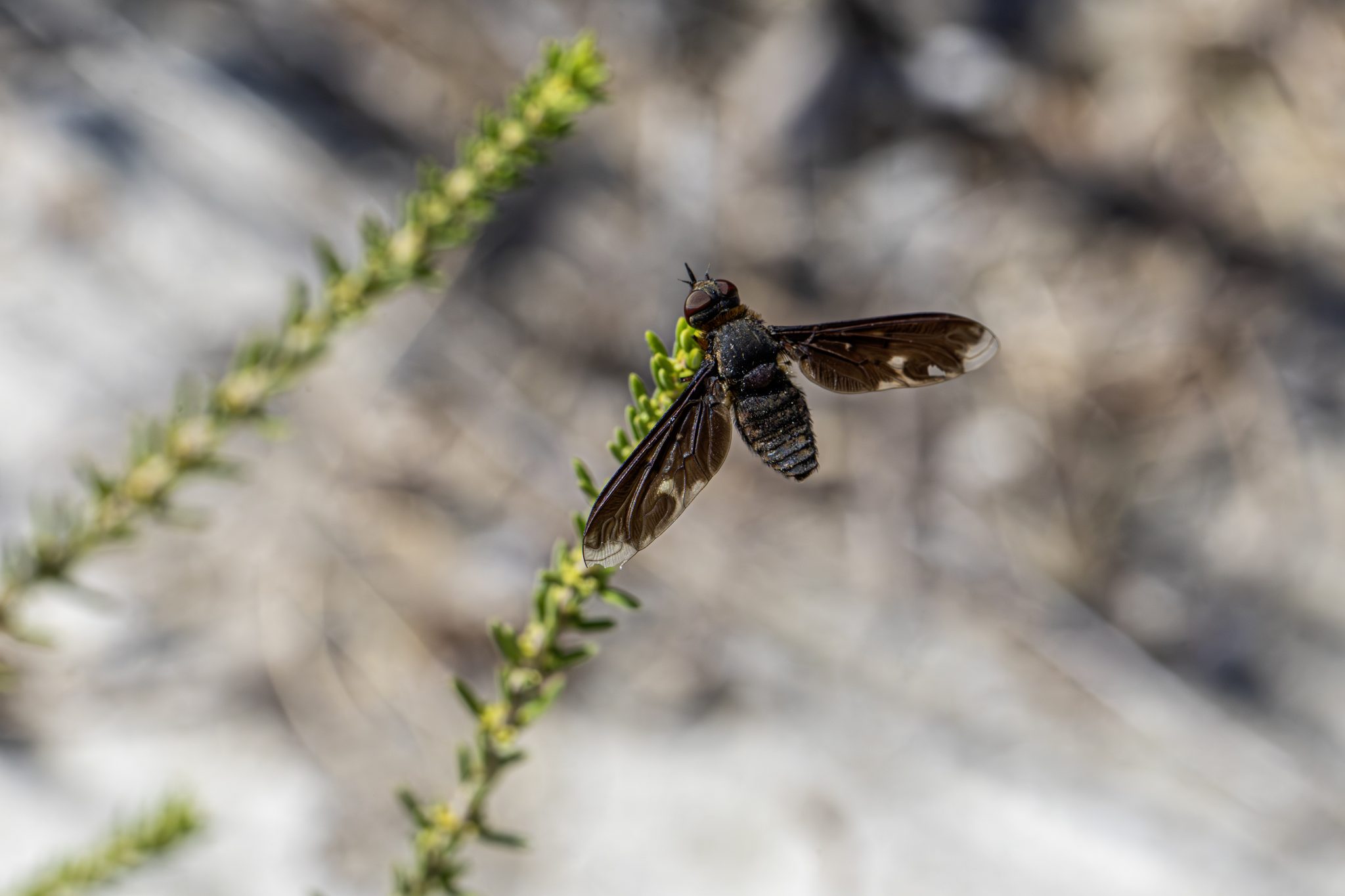Here’s a detailed overview of the Anthracite Bee-fly (Anthrax anthrax), a distinctive parasitic bee-fly found in much of Eurasia.
🪰 Anthracite Bee-fly Overview
- Scientific name: Anthrax anthrax
- Common names: Anthracite Bee-fly, Black Bee-fly
- Family: Bombyliidae (bee-flies)
- Size: 8–12 mm in length
- Flight period: Typically May to September, peaking in midsummer.
🌍 Distribution and Habitat
- Range:
- Widespread across Europe, North Africa, and parts of Asia.
- Becoming more common in northern areas due to climate warming.
- Habitat:
- Sunny, warm locations with bare soil or sparse vegetation.
- Frequently found around solitary bee and wasp nesting sites in sandy or loamy ground.
🐾 Identification Features
- Body:
- Compact, rounded, and densely covered in black hairs, giving a velvet-like texture.
- Wings:
- Dark brown/black with a translucent outer margin; when at rest, wings are usually held open in a V-shape.
- Head:
- Large eyes, short proboscis (unlike some bee-flies with long snouts).
- Legs:
- Black, relatively short compared to body size.
🍽 Feeding and Behavior
- Adults:
- Feed on nectar and pollen from various flowers, especially umbellifers (Apiaceae) and composites (Asteraceae).
- Often hover briefly before landing.
- Larvae:
- Parasitic: Eggs are laid near the entrances of mason bee (Osmia spp.) and potter wasp nests.
- First-instar larvae (planidia) crawl into the nest, where they feed on the host’s larva and stored provisions.
🔁 Life Cycle
- Egg-laying strategy:
- Females flick or drop eggs into/near the nest holes of bees or wasps, often hovering before making quick approaches.
- Larval stage:
- Hypermetamorphic development: first stage is mobile, later stages are sedentary feeders.
- Pupation:
- In the host’s nest chamber, emerging the following season.
⚠ Conservation
- Not threatened — often common locally, especially in sandy or loamy soils with abundant solitary bees.
- Plays a regulatory role in wild bee populations but generally does not cause large-scale declines.
🔎 Interesting Facts
- The genus name Anthrax comes from the Greek for coal, referring to the insect’s sooty coloration.
- Their quick “egg flicking” behavior is a distinctive way to spot them in the field.
- While their larvae are lethal to their hosts, adults are important pollinators.
Visited 32 times, 1 visit(s) today
Views: 3889
Subscribe to the newsletter:
